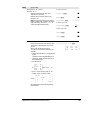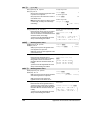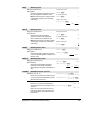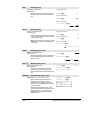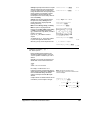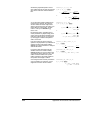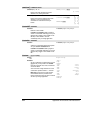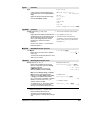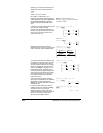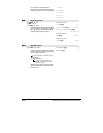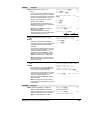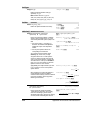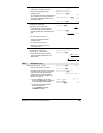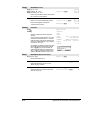
Appendix A: Functions and Instructions 803
Cycle CATALOG
Cycle
Transfers program control immediately to the
next iteration of the current loop (
For, While, or
Loop).
Cycle is not allowed outside the three looping
structures (
For, While, or Loop).
Program listing:
:¦ Sum the integers from 1 to
100 skipping 50.
:0! temp
:For i,1,100,1
:If i=50
:Cycle
:temp+i! temp
:EndFor
:Disp temp
Contents of
temp after execution:5000
CyclePic CATALOG
CyclePic
picNameString
,
n
[
,
[
wait
] ,
[
cycles
]
,
[
direction
]]
Displays all the PIC variables specified and at the
specified interval. The user has optional control
over the time between pictures, the number of
times to cycle through the pictures, and the
direction to go, circular or forward and
backwards.
direction
is 1 for circular or ë1 for forward and
backwards. Default = 1.
1. Save three pics named
pic1, pic2, and pic3.
2. Enter:
CyclePic "pic",3,.5,4,ë1
3. The three pictures (3) will be displayed
automatically—one-half second (.5) between
pictures, for four cycles (4), and forward and
backwards (ë1).
4
44
4Cylind MATH/Matrix/Vector ops menu
vector
4
44
4Cylind
Displays the row or column vector in cylindrical
form [r∠q, z].
vector
must have exactly three elements. It can be
either a row or a column.
[2,2,3] 4Cylind ¸
[2ø‡2
p
4
3]
cZeros() MATH/Algebra/Complex menu
cZeros(
expression
,
var
) ⇒
⇒⇒
⇒
list
Returns a list of candidate real and non-real
values of
var
that make
expression
=0. cZeros()
does this by computing
exp8
88
8list(cSolve(
expression
=0,
var
),
var
).
Otherwise,
cZeros() is similar to zeros().
Note: See also
cSolve(), solve(), and zeros().
Display Digits mode in
Fix 3:
cZeros(x^5+4x^4+5x^3ì 6xì3,x) ¸
{ë 2.125 ë.612 .965
ë 1.114 ì1.073ø
i
ë1.114
+ 1.073ø
i
}
Note: If
expression
is non-polynomial with
functions such as
abs(), angle(), conj(), real(),
or
imag(), you should place an underscore
(
¥ ) at the end of
var
. By default, a variable is
treated as a real value. If you use
var
_ , the
variable is treated as complex.
You should also use
var
_ for any other variables
in
expression
that might have unreal values.
Otherwise, you may receive unexpected results.
z is treated as real:
cZeros(conj(z)ì1ì
i
,z) ¸
{1+
i
}
z_ is treated as complex:
cZeros(conj(z_)ì1ì
i
,z_) ¸
{1ì
i
}
cZeros({
expression1
,
expression2
[,
…
] },
{
varOrGuess1
,
varOrGuess2
[,
…
] }) ⇒
⇒⇒
⇒
matrix
Returns candidate positions where the
expressions are zero simultaneously. Each
varOrGuess
specifies an unknown whose value you
seek.



